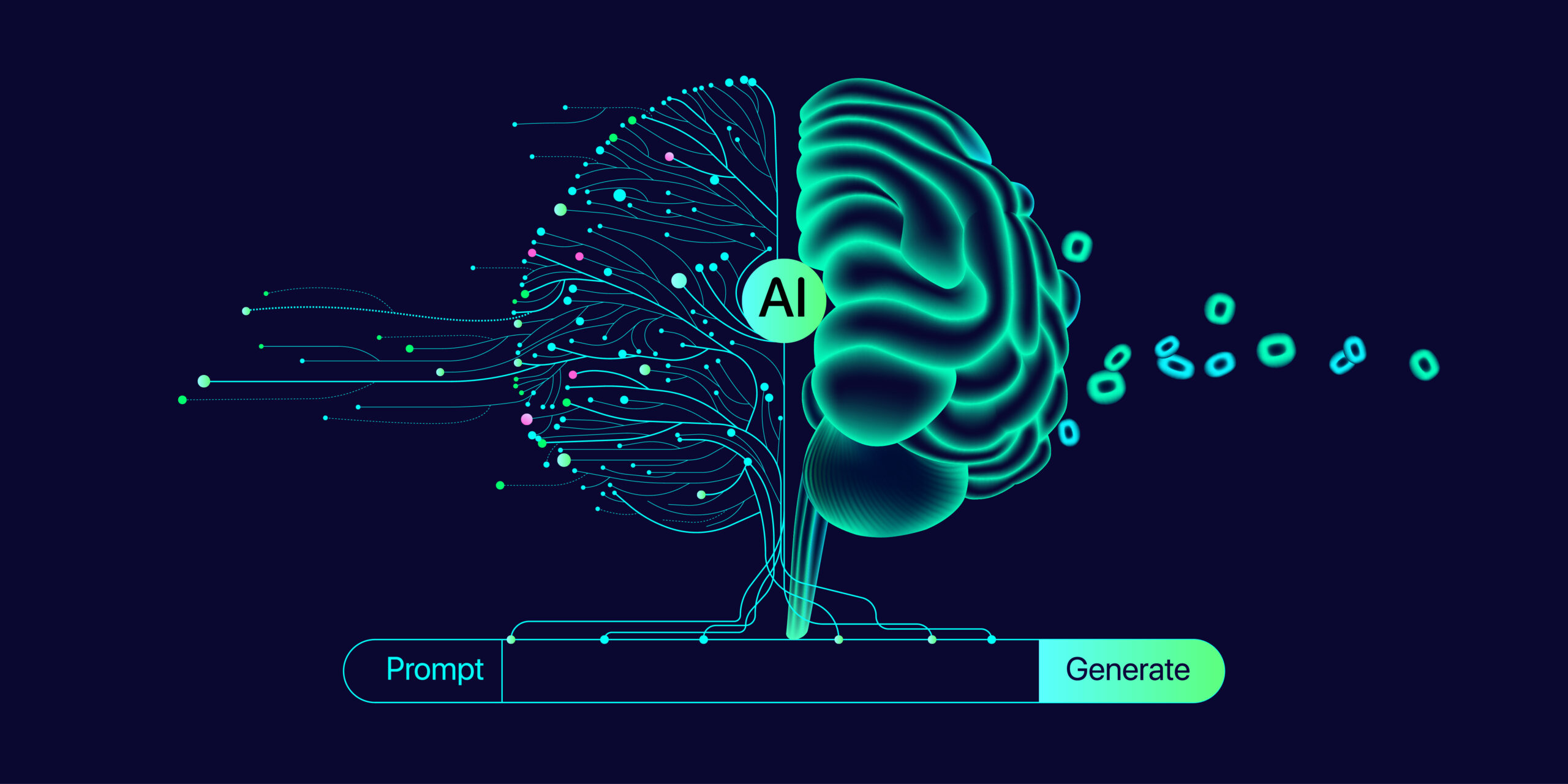An Intellyx BrainBlog for Globalgig
Digital transformation (or DX) brought self-service applications to the web and mobile devices.
DX also revolutionized the way we view data. No longer would data sit in an enterprise silo for access only through a monolithic system. Thanks to 5G connectivity, hybrid IT, cloud hyperscalers, and portable cloud-native resources, we expect data to be delivered anywhere, almost instantly, to power mobile app requests, API calls, and advanced analytics.
We are in the midst of a subsequent transformation in which generative AI (GenAI) is changing how people interact with applications on computers and smartphones. All of the effort we are pouring into GenAI is just a continuation of the competitive race to meet an ever-growing set of customer expectations.
The customer-facing experience may change because of GenAI, but the hybrid network that delivers the goods of security, performance, and high availability across global regions will ultimately be responsible for success.
This network-first design approach is well understood by global web titans such as Netflix and Amazon. Even a slight delay in responding to a click can cause a customer to move to a competing website or app.
Adding in the increased data demanded by GenAI to the mix could potentially lose more customers due to attrition than it attracts, if the network is not ready to scale with customer usage.
Rethinking Traditional Network Approaches
In hindsight, designers of first-generation web apps weren’t concerned about revolutionizing the network, so long as telcos and ISVs continued spending on increased bandwidth to support more powerful compute and storage resources.
If your application demanded even better network performance, you could perhaps pay more for preferred service, connect it to dedicated fiber, or host it in a data center near a PoP closest to the most end users.
Then, two huge shifts occurred:
-
- The ubiquitous use of smartphones and Wi-Fi, followed by more efficient 5G networks, gave almost everyone a much more connected experience, anywhere. For the first time, data became the most valuable commodity carried by telcos.
- Cloud computing with pay-as-you-go infrastructure from leading hyperscalers like AWS and Azure caused on-demand SaaS apps to overtake classic applications, using elastic compute and storage resources such as cloud data lakes that could scale to meet the needs of ephemeral workloads.
This new connected cloud experience definitely increased network demand, but it was nothing compared to the incoming data flood required by AI.
Dealing with the networking demands of GenAI
“The upshot for companies is that the adoption of AI must occur in a technology environment that can manage its unprecedented demand for data. It is analogous to an electric car, which requires a total reconsideration of many components in a gasoline-powered car, right down to the tires. To gain traction, AI will need a new set of wheels, too.”
– Steven Rosenbush, Wall Street Journal, 2024
Every time a user enters a prompt into their AI assistant, it does not just create a one-shot query into a database or data warehouse. A modern AI will act as a system resources broker negotiating with multiple connected AIs.
Each AI prompt kicks off an orchestrated series of API requests and data transfers between the conversational LLM and multiple other services and specialized AI models that handle specific workloads. So for instance, a request to open a new bank account will cause the customer service AI to check another AI model for fraud detection, a different AI for credit readiness, and also, a security librarian AI which checks for OWASP-identified anomalies such as stolen credentials or blocked IP addresses.
Any serious enterprise use of GenAI will require multiple machine-to-machine interactions, and demand much more network robustness at every stage of the data journey.
Globalgig’s Orchestra SaaS platform simplifies connectivity to edge services across global networks, while giving enterprises better visibility into the performance impact of handling both conventional and AI workloads.
Supporting critical business demands alongside AI over a conventionally managed network will only create a network bottleneck. You want the network itself to optimize queries and keep responses and RAG data closer to the edge, so it is ready to help GenAI workloads deliver successful results.
The Intellyx Take
Traditional networks might have been good enough for supporting the synchronous transactions, data transfers, and handshake connections between services to fueled conventional applications.
That just won’t cut it anymore. Before GenAI-driven applications can make a step change improvement to our digital services, we’ll need a step change improvement in how global networks handle the intense data requirements of GenAI.
Organizations should review and update their network strategies and implementations to ensure their data infrastructure can support GenAI business goals. Even if you aren’t deploying LLM chatbots and AI agents right away, moving to a network-first architecture will make the digital backbone of your business perform better overall.
 Guest Author
Guest Author
Jason English, Director & Principal Analyst, Intellyx
Jason “JE” English is a Director and Principal Analyst, and CMO at Intellyx. Drawing on expertise in designing, marketing and selling enterprise software and services, he is focused on covering how agile collaboration between customers, partners and employees accelerates innovation.
JE has broad experience advising and working for companies offering cloud computing platforms, blockchain networks, SaaS-based solutions, industry-specific marketing tools, supply chain management and gaming. A writer, documentarian, and community builder, JE has written, hosted and edited hundreds of technical news, education and thought leadership blogs, event sessions, podcasts and videos.
©2025 Intellyx B.V. Intellyx is editorially responsible for this document. At the time of writing, Globalgig is an Intellyx subscriber. None of the other organizations mentioned here are Intellyx customers. No AI bots were used to write this content.
